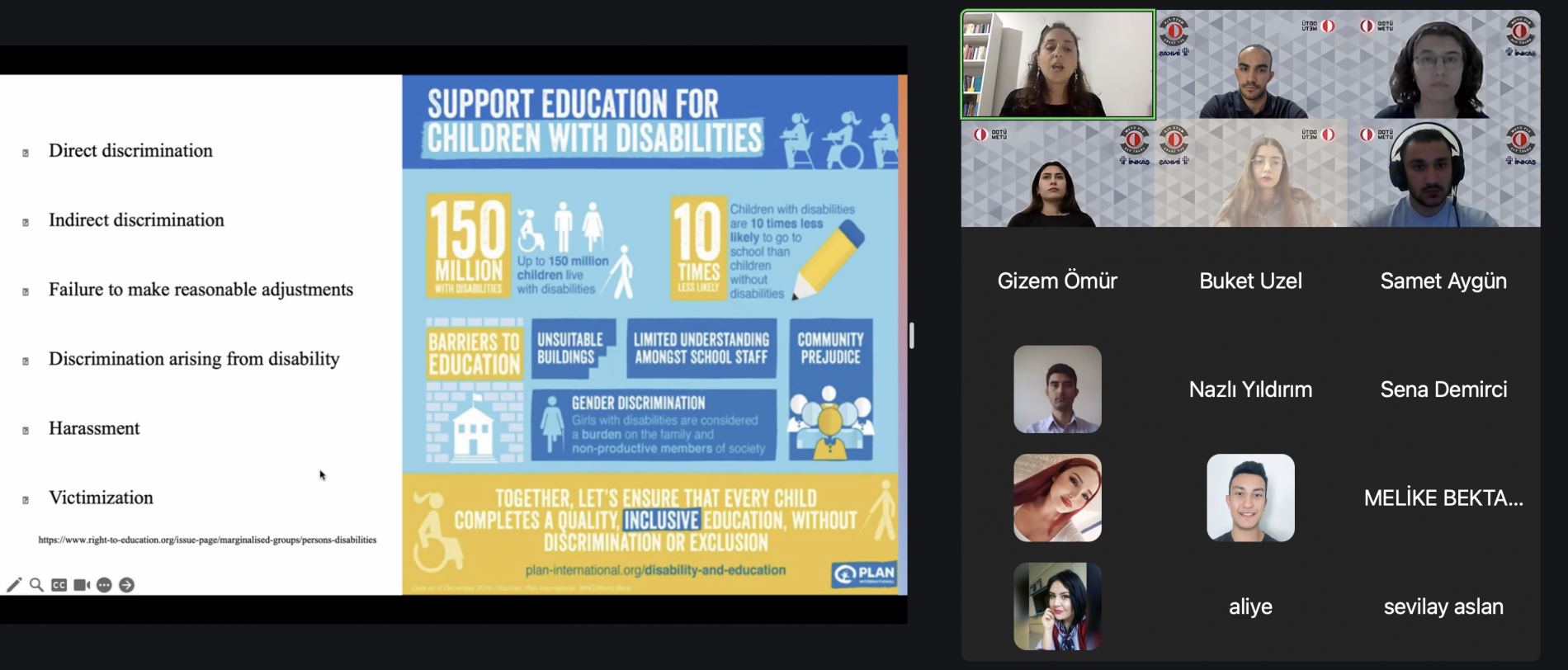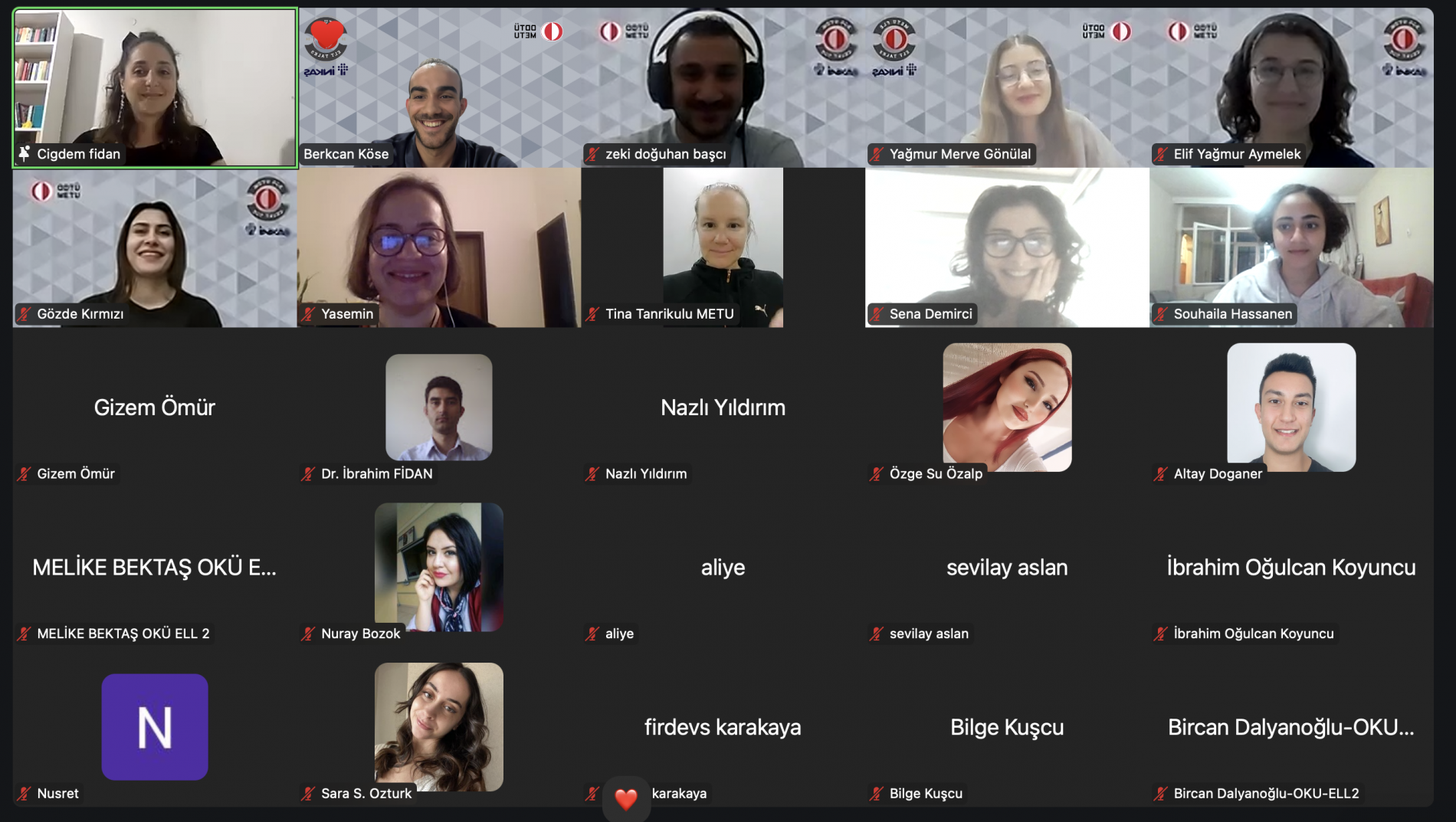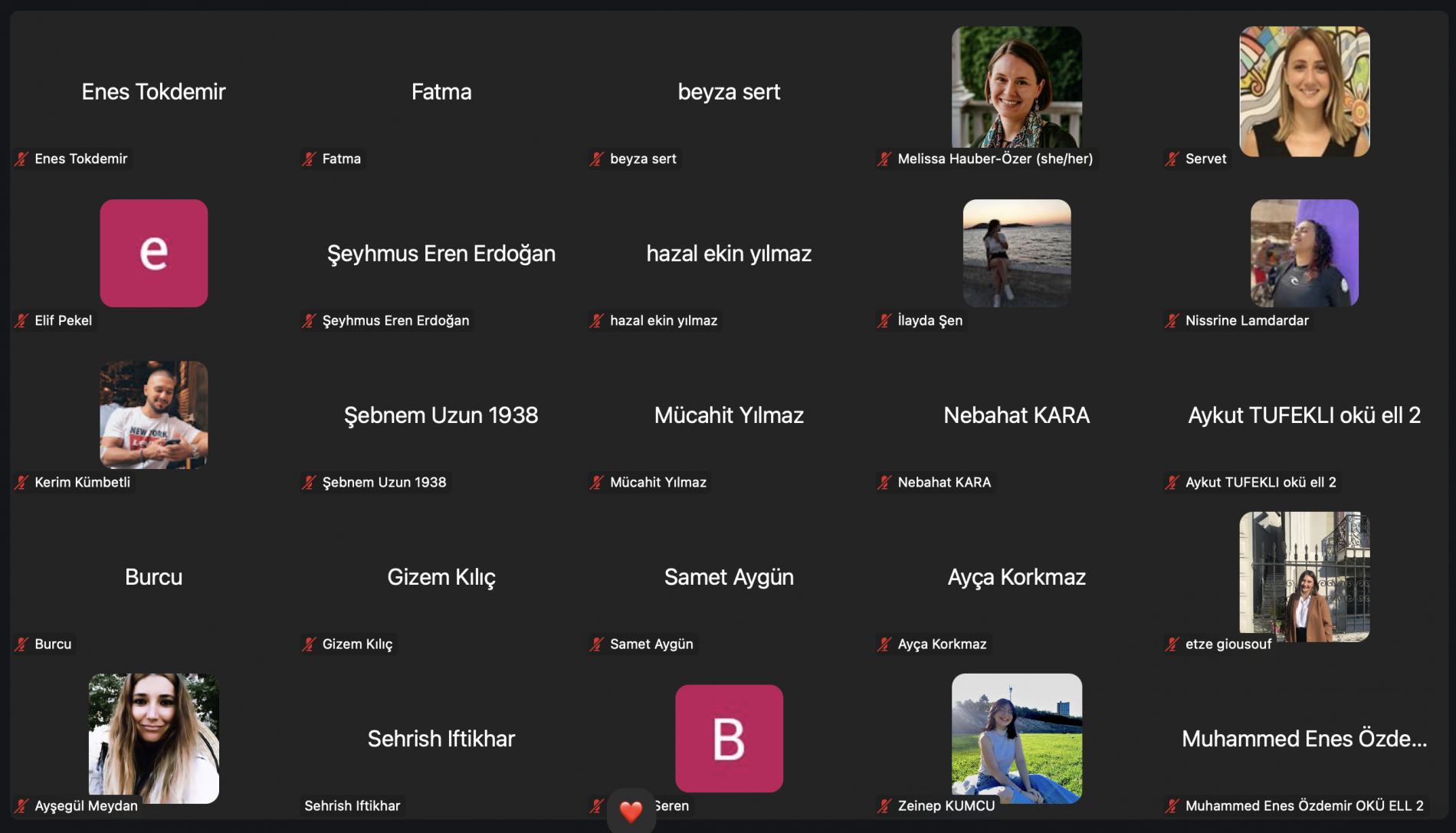METU FLE ELT Talks - Oturum 19 (Dr. Çiğdem Fidan)
Oturum notları:
"As language teachers, whether we are already working in the field or aspiring to become a teacher, we are often introduced to the concept of inclusivity. However, do we truly understand what it means or how inclusive our classrooms really are? Moreover, what is the situation regarding inclusivity in Turkey? Are our classrooms inclusive enough? If not, how can we improve the situation?
For our 19th session, we had the pleasure of hosting Dr. Çiğdem Fidan as our guest speaker. She provided us with valuable insights on inclusivity and inclusive education. Fidan shared with us how her journey towards inclusivity began. While pursuing her PhD, she had a deaf classmate, which sparked her interest in inclusivity. She started questioning the lack of representation of people with disabilities in Türkiye and the education system. This led her to conclude that students with disabilities can also learn English, just like any other student. And thus, her research journey toward inclusivity began.
Let's begin by defining inclusion. Firstly, inclusion should not be confused with assimilation, integration, segregation, or exclusion. Instead, it means respecting the individual needs and accepting them in society. "Inclusion creates a culture of belonging," as Fidan stated. "There are different ways to define inclusion, including equity and diversity."
What about inclusive education? Inclusive education is a framework based on the Universal Declaration of Human Rights. It originated with the Salamanca Statement in 1994 when many countries, including Türkiye, signed a statement that said we should provide accommodation for all students. The Salamanca Statement also aligns with UNESCO's 4A framework that advocates Access, Availability, Acceptability, and Adaptability and the United Nations' SDG 4, ensuring inclusive education and all students' opportunities.
Therefore, inclusive education is primarily for achieving equity in education, which means being able to respond to every need of the students, whereas the ultimate goal of inclusive education is to provide social justice. It is essential to note a key aspect of inclusive education, which Fidan highlighted:
"Inclusive education is not only for students with disabilities but all for students. In addition, inclusive education is not an endpoint or a particular destination but an ongoing process that we, as educators, should be aware of and apply to our sessions."
In addition, English is also a linguistic human right. "When I asked prospective ELT teachers about linguistic human rights, they said that they have little or no knowledge, but they believe that students with disabilities have the right to learn English as a foreign language." Fidan also showed specific data, indicating that prospective teachers mostly think learning a foreign language is a human, social, and educational right."
Then, what happens when we combine inclusive education and English language education? When we mention diversity in our classrooms, the teachers say various cultural and linguistic backgrounds and differences. "No ELT classroom has a clear-cut difference," Fidan says. "It is a spectrum, and you may have students from various backgrounds. But the interesting part is none of the teachers that I asked this question to mentioned disabilities as a part of diversity in an ELT classroom."
"Why was this the case?" Fidan asked, and she proposed this might have been happening because of the lack of knowledge about disabilities or education policies focusing mainly on the linguistic and cultural side of diversity. Therefore, let's get to know what disability means and what the different types of disabilities are. Disabilities can be seen, or not seen, in many ways: Visual, auditory, physical and orthopedic, speech or linguistic, learning-related such as dyslexia, and even a combination of them.
In higher education institutions, the instructors primarily focus on tier-one level practices, the practices that are valid to all students in all settings. But what about tier two and tier three level practices? "We mostly ignore or do not teach tier 2 level teaching practices to prospective ELT teachers, the tier for students who need more support," Fidan mentioned. "That's why when an ELT teacher goes to the field after graduation and has a student with a disability, they mostly do not know how to use the targeted practices."
Another aspect that teachers should be aware of is the subjectivity of the disability, communicating with the student towards learning more and encouraging them to discover more about the disability. Parents and school administrators should also be included in this group to understand each other better.
As a final aspect, let's delve more into Türkiye's situation about inclusive education. In Türkiye, based on data from the Ministry of Education, there are over ten million students at K-12 schools and almost fifty thousand ELT teachers. When it comes to students with disabilities, however, we see that most of them are exempt from English classes. Also, there are almost sixty thousand students with disabilities in special education schools, and there are only 75 ELT teachers in these schools. In addition, since these teachers only have courses related to using audio-visual materials, they mostly know how to teach blind students, whereas they struggle to teach English to deaf students or students with any other disability.
What can we do, then? How can we improve towards being more inclusive of all our students in our classrooms? The answer is: Many things! Although many teachers are inexperienced with students with disabilities, they are hardworking and optimistic about learning! Many already use various methods and strategies, such as interactive reading assignments, total physical response, coloring, matching activities, repetitions, and more. From family engagement, flexible teacher practices, and enhancing communication to searching learners' strengths, a welcoming classroom environment, self-awareness, and mindfulness. From an inquiry-based approach, encouraging teamwork, assigning meaningful work to actually knowing the individual, using a safe school setting, and using varied formats such as technology and authenticity. There are lots of ways to try and discover!
From another perspective, knowing specific barriers to deal with when it comes to taking action for inclusivity helps immensely as well. To give such examples: An inappropriate curriculum, untrained teachers, prejudice towards disabilities, lack of assistive technology, inadequate funding, and, maybe one of the most significant barriers out there, according to Fidan, the poor organization of the education system and the lack of communication among teachers, parents, and administrators.
"We should all know that education is political," Fidan stated. "That is why we should always have a critical perspective while approaching the policy documents, textbooks, or even curriculum we are going to use. Inclusive education is more political because the issue is not the person with the disability but how normalcy is constructed within the society."
There is a lot of work to do when it comes to gaining self-awareness towards students with disabilities and discovering new and more ways to deal with possible challenges towards achieving inclusivity in our classrooms. Nevertheless, by reading, watching, and communicating more with one another regarding our findings, insights, and experiences, it is always possible and doable to reach such a goal to grow as a community for a better future. The change will start slow, but it will be there. Next time that you say, "Can I help you?" say "How can I help?" instead. Before we conclude, we would love to share a particular quote Fidan shared:
"(As people with disabilities) We are not the sources of problems. We are the resources that are needed to solve them. We are not expenses; we are investments."








